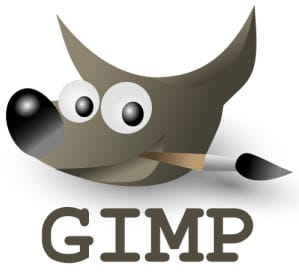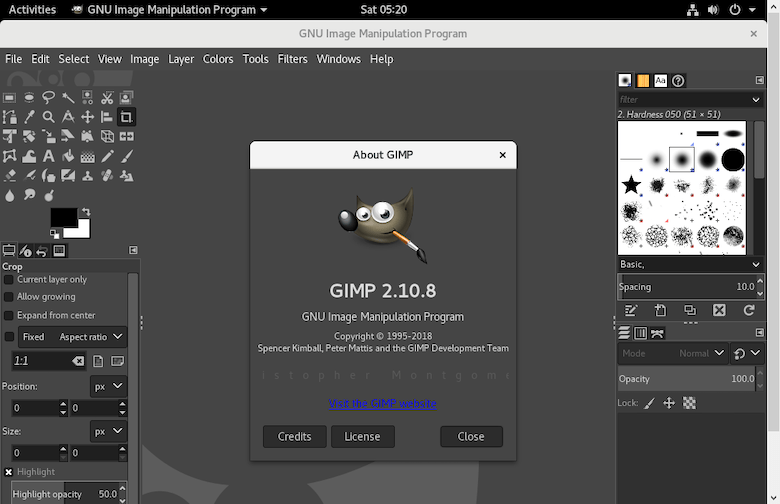How To Install GIMP on Fedora 42

GIMP (GNU Image Manipulation Program) stands as one of the most powerful open-source image editing solutions available for Linux users. This versatile software provides photographers, designers, and digital artists with professional-grade tools for everything from basic photo edits to complex digital compositions-all without the subscription costs associated with commercial alternatives. If you’re running Fedora 42 and looking to harness GIMP’s capabilities, this comprehensive guide will walk you through every installation option available.
What is GIMP?
GIMP is a sophisticated open-source image manipulation program that offers a robust alternative to commercial image editing software. First released in 1995, GIMP has evolved into a powerful cross-platform application supporting Linux, Windows, and macOS. The acronym stands for GNU Image Manipulation Program, highlighting its free and open-source nature.
GIMP provides an impressive array of features including:
- Advanced photo retouching and image composition
- Support for numerous file formats including JPEG, PNG, TIFF, and PSD
- Customizable interface with single and multi-window modes
- Layer-based editing with masks and blending modes
- Comprehensive selection tools and filters
- Extensive plugin architecture for additional functionality
- Scriptability for automating repetitive tasks
The recent release of GIMP 3.0 introduces significant improvements including a modernized interface, non-destructive editing features, and enhanced performance, making it an even more compelling option for Fedora users.
Preparing Your Fedora System
Before installing GIMP, ensure your Fedora 42 system is properly prepared to minimize potential issues.
Update Your System
It’s critical to update your system before installing new software. Open your terminal and run:
sudo dnf clean all
sudo dnf updateThis refreshes your package database and updates all installed packages to their latest versions. A fully updated system reduces compatibility issues and security vulnerabilities.
Check Available Disk Space
GIMP requires approximately 200MB for installation, but you’ll need additional space for working files and potential plugins. Verify you have sufficient free space before proceeding.
Backup Existing Configuration
If you’re upgrading from a previous GIMP installation, consider backing up your configuration files:
cp -r ~/.config/GIMP ~/gimp-config-backupThis preserves your custom brushes, patterns, and settings during the new installation process.
Method 1: Installing GIMP via DNF
DNF (Dandified YUM) is Fedora’s native package manager, providing the most straightforward approach to installing software with full system integration.
Basic Installation Steps
To install GIMP using DNF, follow these simple steps:
- Open your terminal application
- Execute the installation command:
sudo dnf install gimp- When prompted, confirm the installation by typing ‘y’ and pressing Enter
DNF automatically resolves and installs all required dependencies, making this method reliable and straightforward. The command downloads and installs the stable version of GIMP directly from Fedora’s official repositories.
Installing Development Packages
For users interested in GIMP plugin development or advanced customization, consider installing the development packages:
sudo dnf install gimp-develThese packages include header files and development tools that enable you to create custom plugins or modify existing ones.
Verifying Your Installation
After installation completes, verify GIMP installed correctly:
gimp --versionThis command displays the installed GIMP version, confirming a successful installation. You can now launch GIMP from either your application menu or by typing gimp in the terminal.
Method 2: Installing GIMP via Flatpak
Flatpak provides a modern alternative installation method that offers several advantages, particularly for users who want access to the latest GIMP releases.
Installing Flatpak Support
While Flatpak comes pre-installed on most recent Fedora workstation editions, ensure it’s properly installed:
sudo dnf install flatpakThis command reinstalls Flatpak if it was removed, preparing your system to work with Flatpak packages.
Adding the Flathub Repository
Flathub serves as the primary repository for Flatpak applications. Add it to your system:
flatpak remote-add --if-not-exists flathub https://flathub.org/repo/flathub.flatpakrepoThis registers Flathub as a source for Flatpak applications on your system.
Installing GIMP via Flatpak
With Flathub configured, install GIMP using:
flatpak install flathub org.gimp.GIMPThe system will download and install GIMP along with its dependencies within a sandboxed environment.
Troubleshooting Flathub Repository Issues
If you encounter an error message stating “Unable to load summary from remote flathub,” the repository may be disabled. Enable it with:
flatpak remote-modify --enable flathubThen retry the installation command.
Running GIMP Installed via Flatpak
Launch the Flatpak version of GIMP using:
flatpak run org.gimp.GIMPAlternatively, find it in your application menu under “GNU Image Manipulation Program”.
Method 3: Installing GIMP 3.0 via AppImage
AppImage provides a distribution-independent method for installing applications. For those seeking the latest GIMP 3.0 features, AppImage offers a convenient solution requiring no installation process.
Downloading the GIMP AppImage
Download the official GIMP 3.0 AppImage from the project’s website:
wget https://download.gimp.org/gimp/v3.0/linux/GIMP-3.0.0-x86_64.AppImageNote that as of writing, GIMP 3.0 is relatively new and the AppImage is designed to work with Debian 12 or newer distributions, which includes Fedora 42.
Making the AppImage Executable
Before running the AppImage, make it executable:
chmod +x GIMP-3.0.0-x86_64.AppImageThis grants execution permissions to the file.
Running GIMP from the AppImage
Execute the AppImage by running:
./GIMP-3.0.0-x86_64.AppImageThe AppImage contains all necessary dependencies, allowing GIMP to run without traditional installation.
Comparing Installation Methods
Each installation method offers distinct advantages. Understanding these differences helps you select the approach that best aligns with your needs.
DNF Method Advantages:
- Full system integration with Fedora
- Automatic updates through system update process
- Smaller disk footprint
- Native package management
Flatpak Method Advantages:
- Often provides more recent versions
- Sandboxed environment prevents system conflicts
- Consistent behavior across different Linux distributions
- Regular automatic updates
AppImage Method Advantages:
- Access to the latest GIMP 3.0 features
- No installation required
- Portable – can be run from external drives
- No dependency concerns
Launching GIMP
After installation, you can launch GIMP through multiple approaches.
Command-Line Launch
For terminal users, launch GIMP using:
- DNF installation:
gimp - Flatpak installation:
flatpak run org.gimp.GIMP - AppImage:
./GIMP-3.0.0-x86_64.AppImage
GUI Launch
Find GIMP in your application menu:
- Click Activities in the top left corner
- Select Show Applications
- Locate “GNU Image Manipulation Program” or search for “GIMP”

Essential Configuration
Optimizing GIMP’s configuration enhances performance and creates a more efficient workflow.
Interface Customization
GIMP offers two primary interface modes:
Single Window Mode: Consolidates all panels and dialogs into one window, similar to commercial editors. Enable this by selecting Windows → Single Window Mode from the menu.
Multi-Window Mode: Provides separate windows for tools, docks, and images-the traditional GIMP interface that offers flexibility for multi-monitor setups.
Memory Allocation
For improved performance with large images, adjust memory allocation:
- Navigate to Edit → Preferences → System Resources
- Increase the “Tile Cache Size” based on your available RAM
- Adjust the “Maximum Undo Memory” to balance memory usage with undo capability
Theme Selection
Fedora’s dark theme integrates well with GIMP’s default appearance, but you can modify it:
- Navigate to Edit → Preferences → Interface → Theme
- Select from available system themes
Using GIMP on Fedora: Key Features
GIMP offers extensive capabilities for image editing on your Fedora system.
Layers and Masks
Master GIMP’s non-destructive editing with its powerful layer system:
- Create multiple layers to organize image elements
- Adjust layer opacity and blending modes
- Use layer masks to selectively show or hide portions
- Group layers for organization of complex projects
Selection Tools
GIMP provides sophisticated selection tools:
- Rectangle, ellipse, and free-hand selection tools
- Intelligent scissors for edge-based selections
- Fuzzy select tool for color-based selections
- Path tool for creating precise vector-based selections
Filters and Effects
Enhance images with GIMP’s extensive filter collection:
- Blur, sharpen, and noise reduction filters
- Artistic filters including oil paint and watercolor
- Distortion and transformation effects
- Advanced color manipulation options
Installing Additional Plugins
Extend GIMP’s functionality with plugins that address specific editing needs.
Finding Compatible Plugins
Several resources host plugins compatible with GIMP on Fedora 42:
- GIMP Plugin Registry
- GitHub GIMP Projects
- GIMP-Forum Extensions Board
Installing Plugins Manually
To install a plugin:
- Download the plugin files (.py, .scm, or compiled binary)
- Locate your GIMP plugins directory:
- For DNF installs:
~/.config/GIMP/2.10/plug-ins/ - For Flatpak:
~/.var/app/org.gimp.GIMP/config/GIMP/2.10/plug-ins/
- For DNF installs:
- Copy the plugin files to this directory
- Make executable if necessary:
chmod +x plugin-file - Restart GIMP
Updating GIMP
Keeping GIMP updated ensures access to the latest features and security improvements.
Updating DNF Installation
Update GIMP installed via DNF during regular system updates:
sudo dnf updateFor a specific GIMP update:
sudo dnf update gimpUpdating Flatpak Installation
Update all Flatpak applications, including GIMP:
flatpak updateTo update only GIMP:
flatpak update org.gimp.GIMPUpdating AppImage
AppImages require manual updates:
- Download the latest AppImage
- Replace your existing AppImage
- Ensure the new AppImage has execution permissions
Troubleshooting Common Issues
Even with careful installation, you may encounter issues with GIMP on Fedora 42.
Dependency Errors
If DNF reports dependency conflicts:
- Update your system:
sudo dnf update - Clear DNF cache:
sudo dnf clean all - Try installation with dependency resolution:
sudo dnf install --best --allowerasing gimp
GIMP Fails to Launch
If GIMP doesn’t start:
- Launch from terminal to view error messages
- Reset GIMP preferences:
rm -rf ~/.config/GIMP/2.10 - Reinstall GIMP:
sudo dnf reinstall gimp
Performance Issues
For sluggish performance:
- Increase memory allocation in Preferences
- Close other resource-intensive applications
- Configure a dedicated swap directory on fast storage
Font Detection Problems
If GIMP doesn’t recognize fonts:
- Install fontconfig:
sudo dnf install fontconfig - Update font cache:
fc-cache -f -v - Restart GIMP
Uninstalling GIMP
If you need to remove GIMP, the process depends on your installation method.
Uninstalling DNF Installation
Remove GIMP installed via DNF:
sudo dnf remove gimpTo remove all GIMP-related packages:
sudo dnf remove gimp*
sudo dnf autoremoveUninstalling Flatpak Installation
Remove the Flatpak version:
flatpak uninstall --delete-data org.gimp.GIMPRemoving AppImage
For AppImage installations, simply delete the AppImage file:
rm GIMP-3.0.0-x86_64.AppImageCongratulations! You have successfully installed GIMP. Thanks for using this tutorial for installing the GIMP image editor on the Fedora 42 Linux system. For additional or useful information, we recommend you check the official GIMP website.